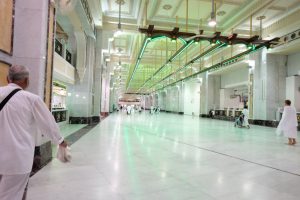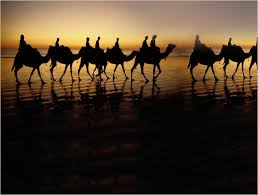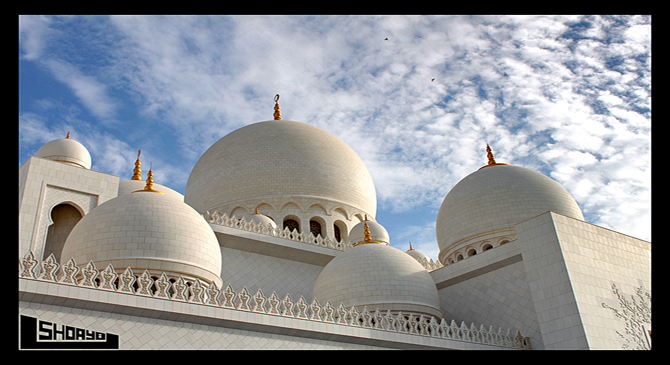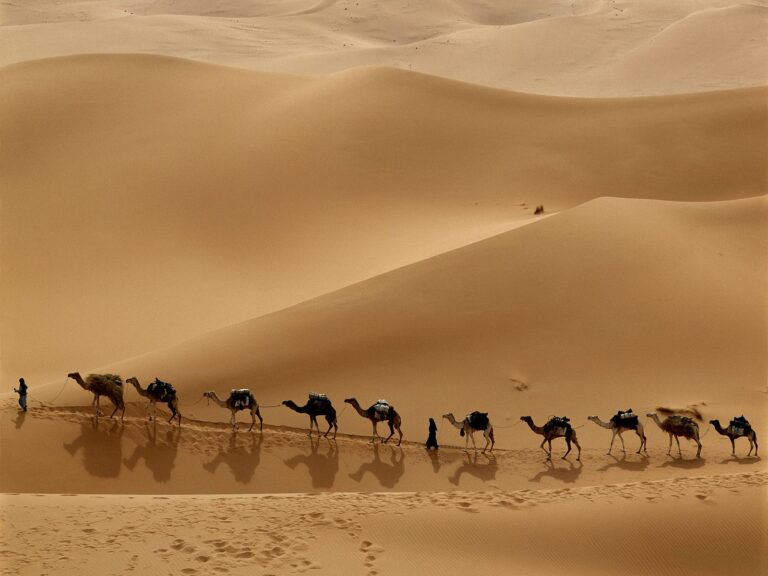By Editorial Staff

Sai, in brief, is one of the rituals of Hajj (pilgrimage) which is one of the five fundamentals of Islam.
As you hold the remote control of your TV with your hand going through the news channels, once you stop at a broadcaster or a guest who talks about the mid-eastern religion that has caused great annoyance to the whole world by its barbarity, bloodiness, backwardness, underdevelopment, fundamentalism, etc., you will be shocked.
Yes, you will be shocked when you hear about the boundless transgression of Islam against the social rights of people, especially woman who has been subject to blatant injustice specifically in her rights to freedom, education, equality, political representation, judiciary, presidency, etc.
How unfair Islam is! How come that people allow these savage commandments and beliefs to circulate! Even, in spite of this, why does Islam spread and its followers increase all over the world to the extent that it is said that Islam is the largest spreading religion in comparison with other religions?
Now take your time to read the following story about a wife of a Prophet, Ibrahim (Abraham, peace be upon him) to know how Islam dealt with women.
Story of Hajar
Ibn Abbas (may Allah be pleased with them) reported: “Ibrahim (peace be upon him) brought his wife and her son Ismail (peace be upon him), while she was suckling him, to a place near the Kabah under a tree on the spot of Zamzam, at the highest place in the mosque. In those days, there was no human being in Makkah, nor was there any water.
So he made them sit over there and placed near them a leather bag containing some dates, and a small water-skin containing some water, and set out homeward.
Ismail’s mother followed him saying: “O Ibrahim! Where are you going, leaving us in this valley where there is no person whose company we may enjoy, nor is there anything (to enjoy)?” She repeated that to him many times, but he did not look back at her. Then she asked him: “Has Allah commanded you to do so?” He said: “Yes.” She said: “Then He will not neglect us.”
She returned while Ibrahim proceeded onwards. Having reached the Thaniya, where they could not see him, he faced Kabah, raised his both hands and supplicated:
O our Lord! I have made some of my offspring to dwell in an uncultivable valley by Your Sacred House (the Ka`bah at Makkah) in order, O our Rubb, that they may perform As-Salat (Iqamat-as-Salat). So fill some hearts among men with love towards them, and (O Allah) provide them with fruits so that they may give thanks. (Ibrahim 14:37)
Ismail’s mother went on suckling him and drinking from the water which she had. When the water in the water-skin had all been used up, she became thirsty and her child also became thirsty. She started looking at Ismail, tossing in agony. She left him, for she could not endure looking at him, and found that the mountain of As-Safa was the nearest mountain to her on that land. She stood on it and started looking at the valley keenly so that she might see somebody, but she could not see anybody. Then she descended from As-Safa, and when she reached the valley, she tucked up her robe and ran in the valley like a person in distress and trouble till she crossed the valley and reached Al-Marwah mountain where she stood and started looking, expecting to see somebody, but she could not see anybody. She repeated that (running between As-Safa and Al-Marwah) seven times.”
Ibn Abbas further related: The Prophet (peace be upon him) said, “This is the source of the tradition of the Sai – i.e., the going of people between the two mountains.”
When she reached Al-Marwah (for the last time), she heard a voice and she exclaimed: ‘Shshs!’ (Silencing herself) and listened attentively. She heard the voice again and said: ‘O (whoever you may be) You have made me hear your voice; have you any succor for me?’ And behold! She saw an angel at the place of Zamzam, digging the earth with his heel (or with his wing), till water flowed out from that place. She started to make something like of a basin around it, using her hands in this way and began to fill her water- skin with water with her hands, and the water was flowing out until she had scooped some of it.”
The Prophet (peace be upon him) further said, “May Allah bestow mercy on Ismail’s mother! Had she let the Zamzam flow without trying to control it (or had she not scooped in that water) while filling her water-skin, Zamzam would have been a stream flowing on the surface of the earth.”
The Prophet (peace be upon him) further added, “Then she drank (water) and suckled her child. The angel said to her: ‘Do not be afraid of being neglected, for this is the site on which the House of Allah will be built by this boy and his father, and Allah will never let neglected His people.’ The House of Allah (the Kabah) at that time was on a high place resembling a hillock, and when torrents came, they flowed to its right and left.
She continued living in that way till some people from the tribe of Jurhum passed by her and her child. As they were coming from through the way of Kada, in the lower part of Makkah where they saw a bird that had a habit of flying around water and not leaving it. They said: ‘This bird must be flying over water, though we know that there is no water in this valley.’ They sent one or two messengers who discovered the source of water, and returned to inform them of the water. So, they all came towards the water.”
The Prophet (peace be upon him) added, “Ismail’s mother was sitting near the water. They asked her: ‘Do you allow us to stay with you?’ She replied: ‘Yes, but you will have no right to possess the water.’ They agreed to that.” The Prophet (peace be upon him) further said, “Isma`il’s mother was pleased with the whole situation as she used to love the company of the people. So, they settled there, and later on they sent for their families who came and settled with them. The child (i.e., Ismail) grew up and learnt Arabic from them (his virtues) caused them to love and admire him as he grew up, and when he reached the age of puberty, they gave him one of their daughters in marriage…” (Al-Bukhari)
This was a part of the story of lady Hajar.
Dear reader, did you stop at the saying of the Prophet which I made bold in the story:
“This is the source of the tradition of the Sai – i.e., the going of people between the two mountains.”
Sai, in brief, is one of the rituals of Hajj (pilgrimage) which is one of the five fundamentals of Islam. The ritual of Sai involves nothing but going in meditation and remembrance of Allah between the mountains of As-Safa and Al-Marwah while hurrying up in the valley between them and supplicating Allah when reaching the tops of both mountains. Did you know, dear reader, that Hajar, the woman, did the same early before Muhammad came? Did you know that all Muslims, men and women, who visit the Ka`bah for Hajj and Umrah (minor pilgrimage) have to do the same while they perform the ritual of Hajj or `Umrah or otherwise their whole worship will be in vain? Did you find, dear reader, any matching example of dignity, esteem, respect and glorification of the woman like this? Did you ever ponder on the Islamic message to know the status of woman in Islam? Do you know that a whole chapter of Qur’an is titled “An-Nisa’” i.e. Women?
This is clear evidence about the status of women, the status of the mother in Islam, which reflects clear impacts of women on the construction of Islamic message and its code of worship. Islam has been depicted as unfair to women because its enemies went to its texts and took it out of their contexts and pictured Islam as unjust, savage and uncultured religion. However, the truth is as evident as you read now.
[opic_orginalurl]




